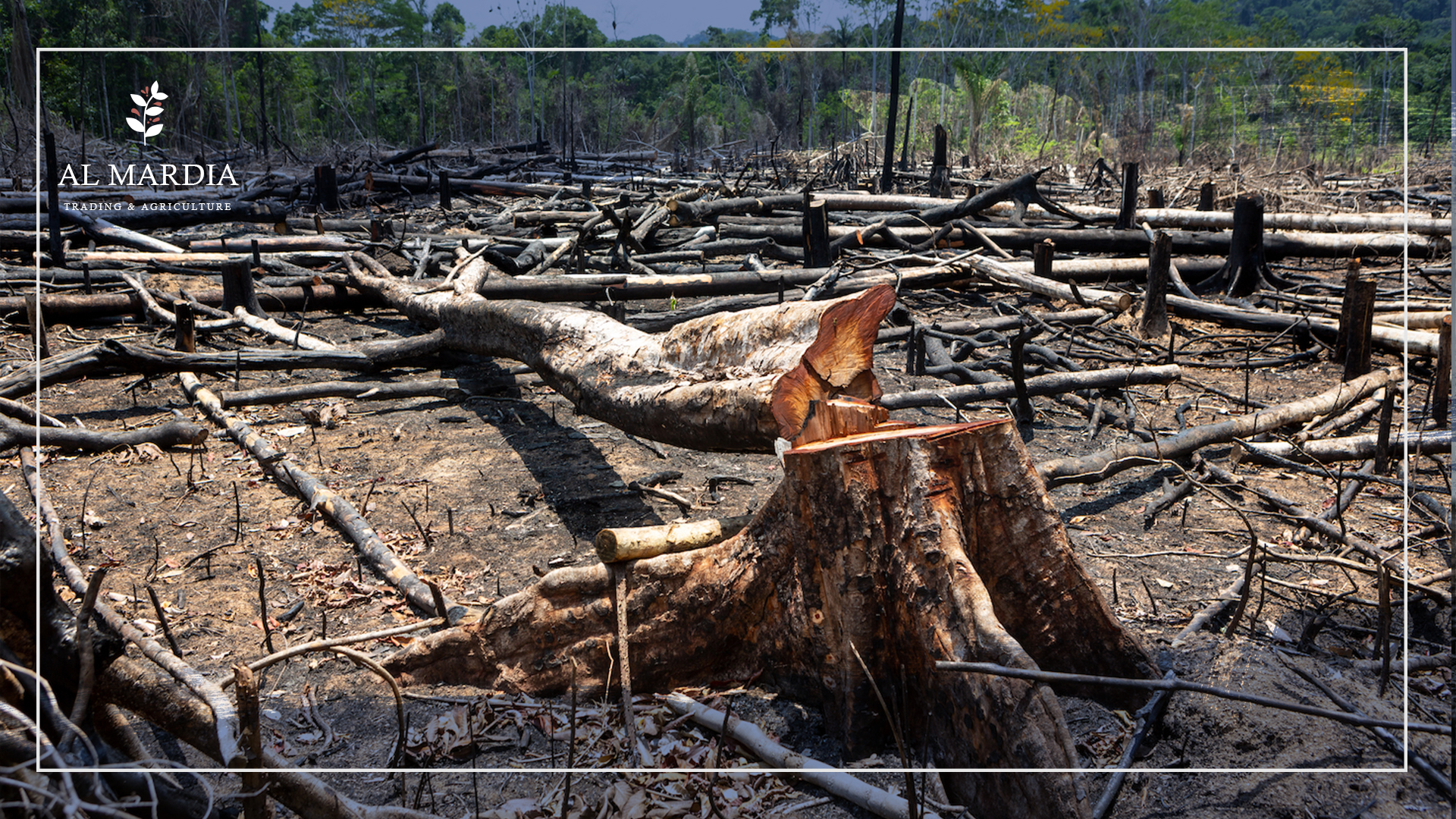
Let’s Protect Our Forests
Climate change has accelerated sharply since the industrial revolution due to the heavy fossil fuel industries and the resulting emissions of greenhouse gasses into the atmosphere. To fight against climate change, let’s protect our forests at first.
It’s also accelerated due to the tremendous expansion of the world’s desertification and the progress of industrial agriculture which depends basically on oil machinery.
In short, deforestation and climate change are strongly correlated problems. Together, they have led many species and civilizations to extinction and now threaten the whole planet.
What is Deforestation?
We can define deforestation as the process of clearing forests and other woodlands to be used in agriculture, mining, or other similar practices. In other words, deforestation is defined as the continuous degradation of dryland ecosystems that are caused by variations of climate conditions and human activities. The most common type of deforestation is not logging but conversion of forested lands to croplands for cattle farming and livestock production.
Forests cover about 30% of the planet and the ecosystem. They play an essential role supporting life on earth. But deforestation is clearing earth’s forests on a massive scale.
“According to the current rate of destruction, the world’s rainforests would completely disappear within 100 years.”
Why should we care about deforestation?
Forestry and agriculture are both responsible for 24% of greenhouse gas emissions making deforestation a significant contributor to climate change.
Deforestation impacts the amount of greenhouse gasses in the atmosphere in two ways:
- First, when trees are cut, they release the carbon they are storing into the atmosphere.
- Second, trees play a critical role in absorbing the greenhouse gasses that increase global warming. Few forests mean a larger amount of greenhouse gasses released into the atmosphere and increased speed and severity of global warming.
In addition to helping regulate the earth’s climate conditions, forests also provide habitats for 80% of the plants and animals that live on land. But deforestation destroys these habitats and diminishes biodiversity. Some estimate that 4000-6000 rainforest species go extinct every year. And more than two billion people who relied on forests as sources of food and shelter are also affected.
Causes of deforestation:
Several factors are responsible for deforestation, which could either be of human or natural origin. Natural reasons for deforestation could be forest fires, floods, droughts, overpopulation of foreign animals and climate change.
The biggest cause of deforestation is agriculture. Farmers chop down trees in order to plant crops like soybeans, wheat or cocoa. Human activities are reported to be among the main causes of global deforestation with agricultural industries, cattle breeding, timber extraction, mining, oil extraction, dam construction and infrastructure development.
“Due to several studies, it’s proved that agricultural activities and urbanization are both drawn out as the main primary human factors of global deforestation.”
RELATED TOPIC: What is Sustainable Agriculture?
Consequences of deforestation:
- Loss of Biodiversity:
One of the most catastrophic results of deforestation is destruction of biodiversity. The forest contains some of the most important essence of biodiversity, including mammals, birds, insects, amphibians and plants. Many rare fragile species are sheltered and conserved in the forest, and human activities contributed to put the entire ecosystem in danger.
- Soil Erosion:
The soil in the forest is known for its richness in organic matter and its strong resistance to erosion and other extreme weather events. On the other hand, deforestation lowers the soil quality making it very fragile to natural disasters like floods and landslides.
Furthermore, it’s good to know that a huge load of eroded soil is very possible to accumulate into water streams and rivers clogging waterways and damaging irrigation infrastructures.
- Climate Change:
Climate change is a direct result of the increment in greenhouse gas emissions like CO2, methane and other gasses that trees usually absorb and release oxygen instead.
Deforestation means releasing all these trapped heating gasses, increasing the possibilities for many natural disasters.
- Outbreak of New Diseases:
Human invasion to the forests was the main reason behind emerging tropical diseases and outbreaks including deadly hemorrhagic fevers like Ebola and Lassa fever.
Unfortunately, this bad behavior against forest such invasion and destruction could lead to a massive epidemic that could kill many innocents on our planet.
Deforestation solutions:
Deforestation is a huge problem and everyone has an opinion on how to solve it. There are many solutions, but we need to decide which one will be the best for the planet, for example:
-
Reforestation and Afforestation
It’s very beneficial to plant more trees to replace the cut ones and increase the number of initiatives that happen every year to compensate for all the trees that we’ve already lost.
It is very important to enhance the eroded soil before any reforestation process and examine its components to provide all needed substances through biological fertilizers and soil supplements. After that, we should wisely choose which species of trees to plant that are able to adapt with weather conditions and soils and water formations; thankfully many laboratories and agricultural companies provide these enlightenment services.
-
Sustainable, Forest-Friendly agriculture:
We must apply sustainable approaches in agriculture and farming. Moreover, to protect our forests we nee to educate others about its environmental efficiency and productivity.
Sustainable projects include making farms in modest size with enough room to grow crops and a limited number of livestock without needing to cut down trees or harm nature. In addition, biological requirements such as organic fertilizers, biopesticides, bioherbicides are only recommended.
Conclusion
The effects of deforestation are grave but not irreversible efforts like managing forest resources. Let’s protect our forests by eliminating clear-cutting, embracing sustainable agriculture and planting new trees to replace those removed. Huge efforts can be made to reduce deforestation’s environmental impact on our planet, and we must start immediately. Finally, while some plant and animal species are gone forever, combating deforestation can help prevent further loss of biodiversity.
You can now check the full list of Agricultural Products
produced by Almardia Group
Common Questions:
What are the main causes of deforestation?
- Climate change.
- Unorganized logging.
- Urban expansion.
- Industrial agriculture.
- Mining.
How can we stop deforestation?
- Plant more trees.
- Go paperless as possible.
- Buy recycled products and support recycling activities .
- Buy only certified wood products.
- Raise awareness about the climate change problem.
How much deforestation has happened in the last 50 years?
In the Amazon, around 17% of the forest has been lost in the last 50 years. Mostly due to forest conversion to pastorals.





